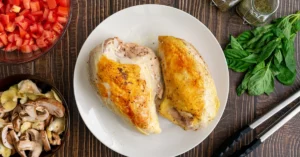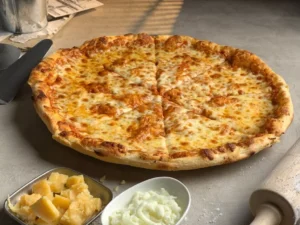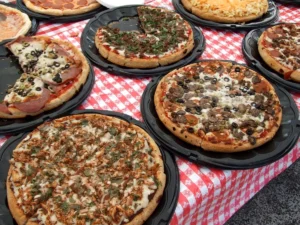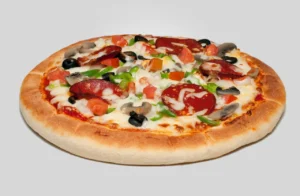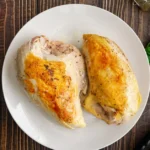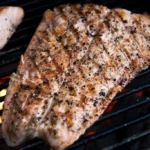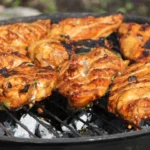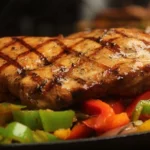If you’ve ever explored diverse Mexican culinary traditions, you might have come across the captivating ingredient known as “jaiba” – the blue crab.
It’s no surprise that you want to know more about “jaiba,” especially when you don’t know that the term is used for blue crabs in Mexican cuisine.
In this blog post, you’ll learn all about Jaiba as a crab and as a delicacy in Mexican cuisine.
Join us on a flavorful journey to unravel the essence of Jaiba and discover how it adds a delectable twist to dishes around the globe.
What is Jaiba?
Jaiba is the Spanish word for “blue crab.” In Spanish-speaking regions like Mexican coastal regions, “jaiba” is specifically used to refer to the freshwater blue crab (Callinectes sapidus). Another Spanish name for the blue crab is “cangrejo azul.”
Dishes like “jaiba rellena” (stuffed crab) and “jaiba a la diabla” (spicy crab) are made using the meat from blue crabs.
While they’re famous for their vibrant blue color, blue crabs can adjust their appearance to blend in with their surroundings. They can turn a pale green or brown when needed.
Jaiba are opportunistic omnivores. They use their powerful claws to catch prey like fish, mollusks, and small crustaceans. They’ll also munch on plant material and detritus.
Female jaiba crabs are dedicated parents. They carry their eggs in a sponge-like mass beneath their abdomen, protecting and aerating them until they hatch into larvae.
How Can You Identify Real Jaiba (Callinectes sapidus)?
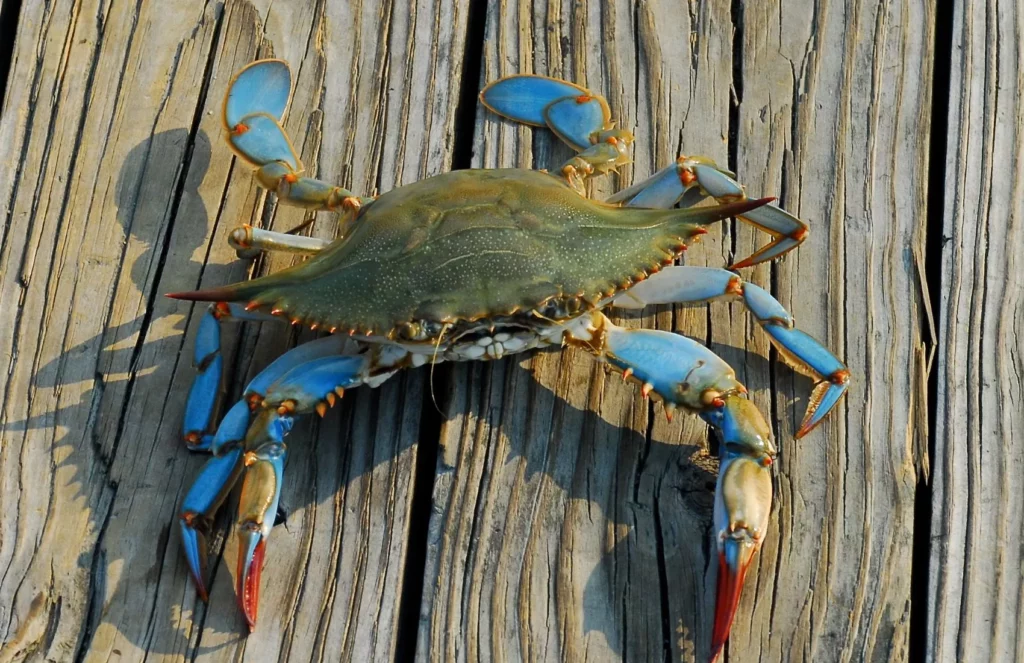
The real blue crab (Callinectes sapidus) is the most common type of blue crab found in North America’s Atlantic and Gulf coasts. Its blue carapace (shell) and orange claws easily define it.
The claws of the male blue crab have a blue-fixed finger with red tips, while the claws of the female blue crab have an orange-fixed finger with purple tips. The carapace of the female blue crab is also wider and rounder than the carapace of the male blue crab.
What Does Jaiba Taste Like?
Blue crab (Callinectes sapidus) is known for its sweet, delicate, and slightly briny flavor as the name “Callinectes sapidus” suggests them as “savory beautiful swimmer.”
The taste of blue crab meat can be described as a blend of sweetness and a subtle oceanic essence. Its texture is tender and succulent, making it a favorite among seafood enthusiasts.
When cooked, the meat turns white and has a flaky consistency that easily breaks apart. The flavor profile of blue crab is often considered milder compared to other types of crab, allowing it to shine in a variety of dishes without overpowering other ingredients.
The exact taste can also be influenced by factors such as the crab’s diet, its environment, and how it’s prepared. Whether enjoyed in classic dishes like crab cakes or simply steamed and served with melted butter, blue crab offers a delectable culinary experience that captures the essence of the sea.
Do jaiba (Callinectes sapidus) Have to Be Alive Before Cooking?
Yes, jaiba (Callinectes sapidus) must be alive before cooking. Live crabs are more tender and flavorful than dead crabs. When a crab dies, its muscles relax and the meat becomes tough.
To kill a crab before cooking, you can put it in the freezer for 30 minutes. This will put the crab to sleep and make it easier to kill. You can also kill a crab by cutting off its head.
Once the crab is dead, you can cook it in a variety of ways, such as steaming, boiling, or grilling. When cooking crab, it is important to not overcook it. Overcooked crab will become tough and rubbery.
What Color is Blue Crab After Cooking?

Blue crabs turn bright red when cooked. This is due to a chemical reaction that occurs when the heat breaks down a protein called crustacyanin. Crustacyanin is a blue pigment that is found in the shells of many crustaceans, including crabs, lobsters, and shrimp. When crustacyanin is broken down, it releases a red pigment called astaxanthin. Astaxanthin is what gives cooked blue crabs their characteristic red color.
What do Jaiba (Callinectes sapidus) Eat?
Jaiba (Callinectes sapidus), also known as blue crabs, are omnivorous scavengers. They eat a variety of things, including:
- Clams
- Oysters
- Mussels
- Smaller crustaceans
- Freshly dead fish
- Plant and animal detritus
- Smaller and soft-shelled blue crabs
Blue crabs are opportunistic feeders and will eat whatever is available. They’re especially fond of clams and oysters, which they can open with their strong claws.
Blue crabs also eat a lot of detritus, which is organic matter that has fallen to the bottom of the ocean. This detritus provides blue crabs with important nutrients.
Blue crabs are an important part of the marine ecosystem. They help to keep the populations of clams, oysters, and other crustaceans in check. They also help to recycle nutrients by eating detritus.
What’s the Significance of Jaiba in Traditional Mexican Cuisine?
In the heart of traditional Mexican cuisine, “jaiba” – the captivating crab – takes center stage. It brings a taste of the sea to classic dishes that have delighted generations. Let’s explore its varying uses in traditional Mexican cuisine.
Tacos de Jaiba
Step into the vibrant streets of Mexico, and you’ll likely come across “Tacos de Jaiba.” These are soft tortillas filled with tender jaiba meat, fresh vegetables, and a burst of zesty flavors. These tacos capture the essence of coastal living. Thus, they offer a delightful seafood twist to the beloved taco tradition.
Jaiba Enchiladas
Picture this: warm tortillas rolled around a generous helping of succulent jaiba meat, smothered in a rich enchilada sauce. The result is a mouthwatering dish that nicely blends the sweetness of crab with the bold flavors of Mexican cuisine.
Jaiba Ceviche
When the sun is high, and you’re craving something refreshing, “Jaiba Ceviche” comes to the rescue. Fresh jaiba meat marinated in tangy citrus juices, combined with diced veggies and a hint of spice, creates a cool and energetic treat, expressing the vibrant spirit of Mexico.
Sopes de Jaiba
Sopes, those delectable little masa cakes, get a seafood makeover with “jaiba.” These savory delights are topped with a medley of jaiba meat, beans, cheese, and salsa, forming a delicious blend of textures and flavors.
Jaiba Tamales
Tamales, a Mexican comfort food, get you an oceanic twist with “jaiba.” These steamed bundles of joy feature a filling of jaiba meat mixed with spices wrapped in corn masa.
The result?
A savory indulgence that’s perfect for any occasion
Jaiba Tostadas
“jaiba tostadas” are a must-try for a crispy and satisfying snack. These crunchy corn tortillas are topped with a medley of jaiba meat, fresh veggies, and tangy salsa, creating a delightful explosion of flavors with every bite.
In traditional Mexican cuisine, “jaiba” weaves its magic into various dishes. It adds a unique seafood twist to beloved classics. From tacos to ceviche, every bite reflects the vibrant culture and rich flavors that define Mexican gastronomy.
How is Jaiba used in Modern Cuisine?
When it comes to adding a touch of oceanic Mexican delight to your plate, look no further than “jaiba” – the Spanish term for crab. From the shores of Mexico to the coasts of the Caribbean, this versatile crustacean has found its way into a treasure trove of culinary creations to make your taste buds dance.
Jaiba Tacos
Jaiba tacos are a delicious treat in Mexican cuisine. These tacos feature tender crab meat as the main filling, mixed with spices and sometimes vegetables. The crab mixture is then tucked into soft tortillas and topped with a variety of flavorful garnishes.
From crunchy vegetables to zesty salsas, jaiba tacos offer a mouthwatering blend of textures and tastes. Each bite captures the sweet essence of crab, creating a delightful twist on traditional tacos.
Crab Enchiladas
Jaiba enchiladas are a delectable Mexican dish where tortillas are filled with tender blue crab meat mixed with spices and rolled up. These filled tortillas are placed in a baking dish and covered with a flavorful sauce made from ingredients like tomatoes, chilies, and onions. After baking, the enchiladas soak up the sauce’s rich flavors, creating a delightful blend.
The sweet crab meat contrasts beautifully with the savory sauce, making jaiba enchiladas a mouthwatering fusion of tastes and textures. Served with traditional sides like rice and beans, this dish brings a unique seafood twist to the beloved enchilada concept.
Jaiba Empanadas
Jaiba empanadas are tasty pastries filled with blue crab meat and folded dough. Popular in Latin American cuisines, empanadas are dough pockets filled with various ingredients, then baked or fried. In jaiba empanadas, crab meat is mixed with spices, vegetables, and sometimes cheese. The mixture is enclosed in empanada dough, sealed, and cooked. The final product is a flavorful, handheld treat with the sweetness of the crab and a crispy crust.
Jaiba Salads
Jaiba salad is a delightful dish featuring blue crab meat as its star ingredient. It typically combines tender crab meat with fresh and crisp vegetables, such as lettuce, tomatoes, cucumbers, and onions.
The salad is often drizzled with a zesty dressing, which can be a citrus vinaigrette or a creamy dressing, enhancing the flavors of the crab and vegetables.
Jaiba salad offers a light and refreshing option, perfect for warm weather or as a starter. The sweet and delicate taste of crab, combined with the textures of the vegetables and the dressing’s tanginess, creates a harmonious blend that tantalizes the taste buds.
Stuffed Jaibas
When you’re in the mood for a little culinary adventure, try stuffed crabs. Jaiba meat mixed with spices, breadcrumbs, and other delightful ingredients is stuffed back into crab shells and baked to perfection.
Crab Cakes
If you’re a fan of crispy yet tender delights, crab cakes should be your go-to. Picture this: succulent jaiba meat blended with breadcrumbs, herbs, and a dash of love, pan-fried to perfection. What you get is a golden-brown delicacy that’s both satisfying and flavorful.
What’s the Importance of Jaiba in Mexican Culture and Festivals?
In the vibrant mosaic of Mexican culture, “jaiba” – the crab – is more than just a delicacy; it’s a cultural treasure that weaves its way through festivals and traditions, uniting communities and celebrating the richness of the sea.
Jaiba Festivals
Mexico’s coastal regions come alive with jaiba festivals. Vibrant gatherings are arranged to pay homage to the sea’s bounty.
These festivals are a sensory explosion of color, taste, and togetherness, featuring an array of crab-based dishes that showcase the versatility of jaiba.
Here are some examples of festivals that celebrate jaiba:
- The Festival del Jaiba in Mazatlán, Sinaloa, Mexico, is a two-day festival that features jaiba in a variety of dishes, including ceviche, jaiba a la diabla, and jaiba enchilada. The festival also includes live music, dancing, and other entertainment.
- The Festival de la Jaiba in Baracoa, Cuba, is a smaller festival that celebrates jaiba and other seafood. The festival includes a seafood cook-off, live music, and dancing.
- The Festival de la Jaiba en la Playa in Puerto Plata, Dominican Republic, is a beach festival that celebrates jaiba and the beach. The festival includes a seafood cook-off, live music, and dancing.
Symbolism and Significance
The way crabs move around connects with how Mexicans handle things – being adaptable and strong. When crabs change their hard shells for new ones, it’s like they’re starting fresh. This is like how Mexicans also see change as a way to grow and make things better, both for themselves and their culture.
Tradition and Family
Jaiba isn’t just food; it’s a link to tradition and family. Catching crabs becomes a cherished activity. It brings families and friends together to share stories, laughter, and the art of crab catching. These moments foster a strong sense of connection and belonging.
Jaiba Artistry
From intricate crab-shaped crafts to paintings depicting crab-filled landscapes, the jaiba’s image finds its way into Mexican art. These creations reflect the crab’s cultural significance and its role in Mexican life.
Cultural Bridges
Through jaiba, Mexico’s rich coastal culture bridges generations. Whether it’s the flavors of crab enchiladas or the communal joy of a jaiba festival, this creature embodies the Mexican spirit of celebration, community, and the enduring relationship with the sea.
As you explore the flavors of Mexican jaiba, you’re participating in a profound cultural celebration that honors tradition, resilience, and the vibrant tapestry of Mexico.
Conclusion
Whether you enjoy eating the breezy shores of the Caribbean or exploring the vibrant streets of Mexico, jaiba brings the essence of the sea to your plate. From mouthwatering crab cakes to zesty crab tacos, the versatility of this crustacean shines through in every dish. So, the next time you’re in the mood for a taste of the ocean, let jaiba take you on a culinary journey that’s as delicious as it is satisfying.
